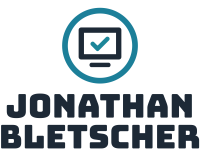Do you believe aligning with your employees is a waste of time and that a regular team meeting is enough? In this case, think again and let me explain to you why regular 1:1s are important and how to conduct them.
Having a regular exchange with your team members is important to get to know and understand them better. In regular alignment meetings, you can course-correct or coach them to good performance. Aside from this, it is very important that you establish trust. This can only happen over time and requires congruent behavior.
Of similar importance is that they develop a feeling about your leadership style, your risk appetite, and way of working. You should also explain the way the upper management thinks (if you have the insights… could be just your direct manager). This will allow them to take decisions and work out solutions confidently fitting your risk profile and working style.
💡 The better your team members & employees know and understand you the better they can perform and take decisions.
Before I go now into how to conduct a one on one meeting (1:1) I want to highlight the below points.
Keep them always in the back of your mind!
- As a leader, your words have more impact than you think. Mind what and how you say it.
- Your behaviors and attitude will swap over to the team. This can be good or bad… Be inspiring and hard working.
Scheduling & Structuring 1:1 Meetings
- Set up a meeting with your employee at a regular interval. The interval depends on your environment and working style. For me, this is typically weekly or bi-weekly.
- For weekly to bi-weekly, I reserve up to 30 minutes
- Take notes about what you discuss, what to follow up on from your side and the side of the employee. This also helps you during performance reviews as you can see what topics were worked on during the year and if the employee took up the action items reliably
Behavior and mindset during the meeting
Before each call or direct meeting just remember that for you this might be one of many meetings as you have many employees or direct reports, however for your employee it is one of few times that she/he gets you alone. Be there and focus on the person in front of you or on the call.
During the call ensure that you are a good listener, people need the feeling their problems are heard and someone cares about them.
The things I try to focus on during a meeting are:
- Making people feel safe
- If people feel safe they will take decisions and perform well. Everyone makes mistakes, stand behind them and coach them in the right direction
- Ensure they have what they need to get their job done
- Give guidance, ideally indirectly by asking questions
- How would you propose to solve this?
- How about trying X.?
- What could you do that the person is more responsive?
- Which teams do you need to get the next steps decided?
Content and flow
In order to make my alignment calls effective and valuable for my team members and myself, I follow the below flow. You can of course adapt it to your style but it certainly helps to have a rough flow defined to stay on point.
Example flow:
- Welcome and how are you
- Health and family
- Topics that are on top of mind for the employee
- Discussion of issues or blockers and how to resolve them
- Status on current ongoing projects/tasks
- Update from my side on required actions, decisions, and strategic topics coming from the top where relevant
- Agreeing on action items and follow-up items for me and the employee
Do you have a different way of structuring regular alignments? Any tips or ideas? Then let me know and discuss with me in the comments or per email.

